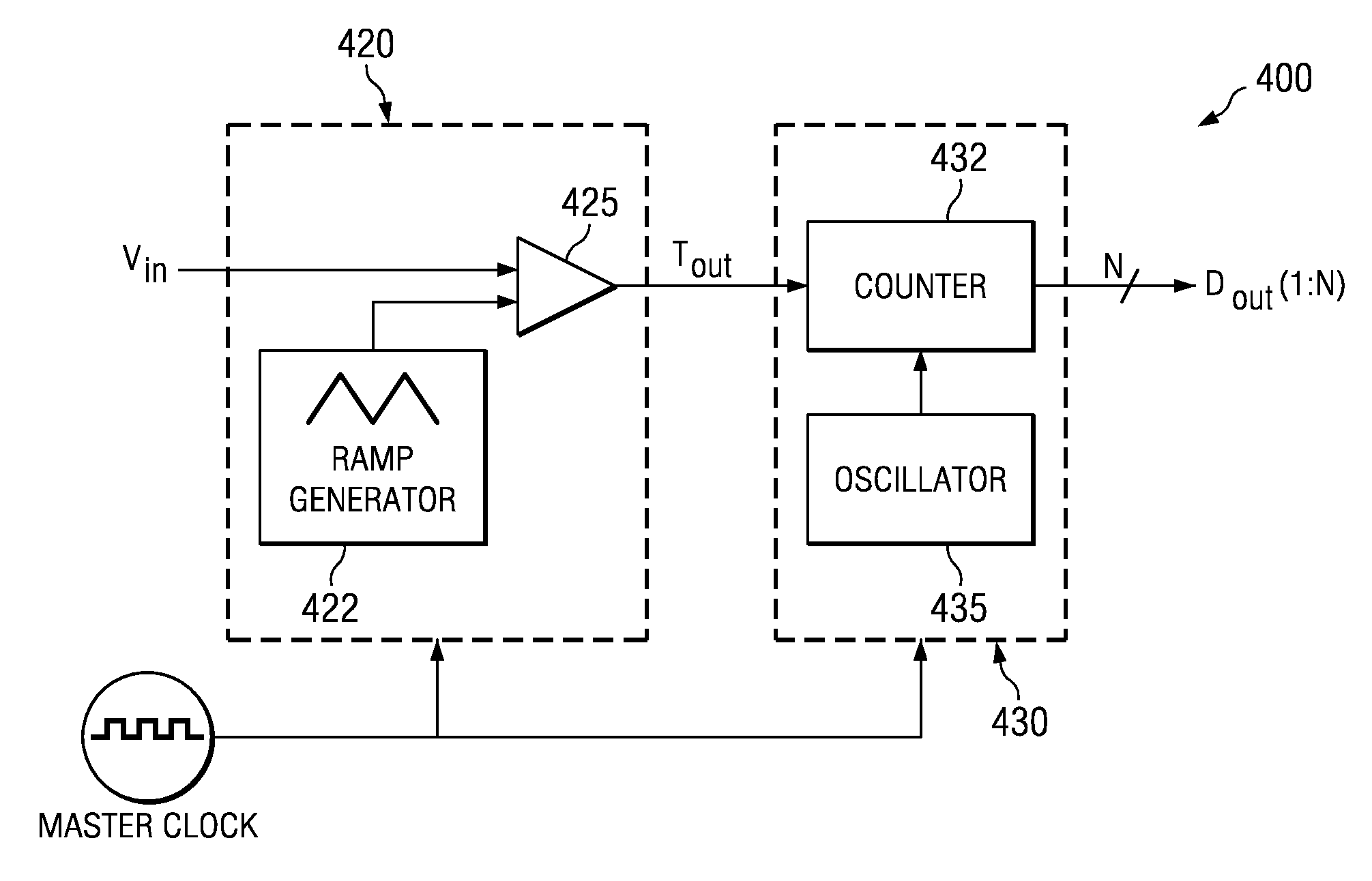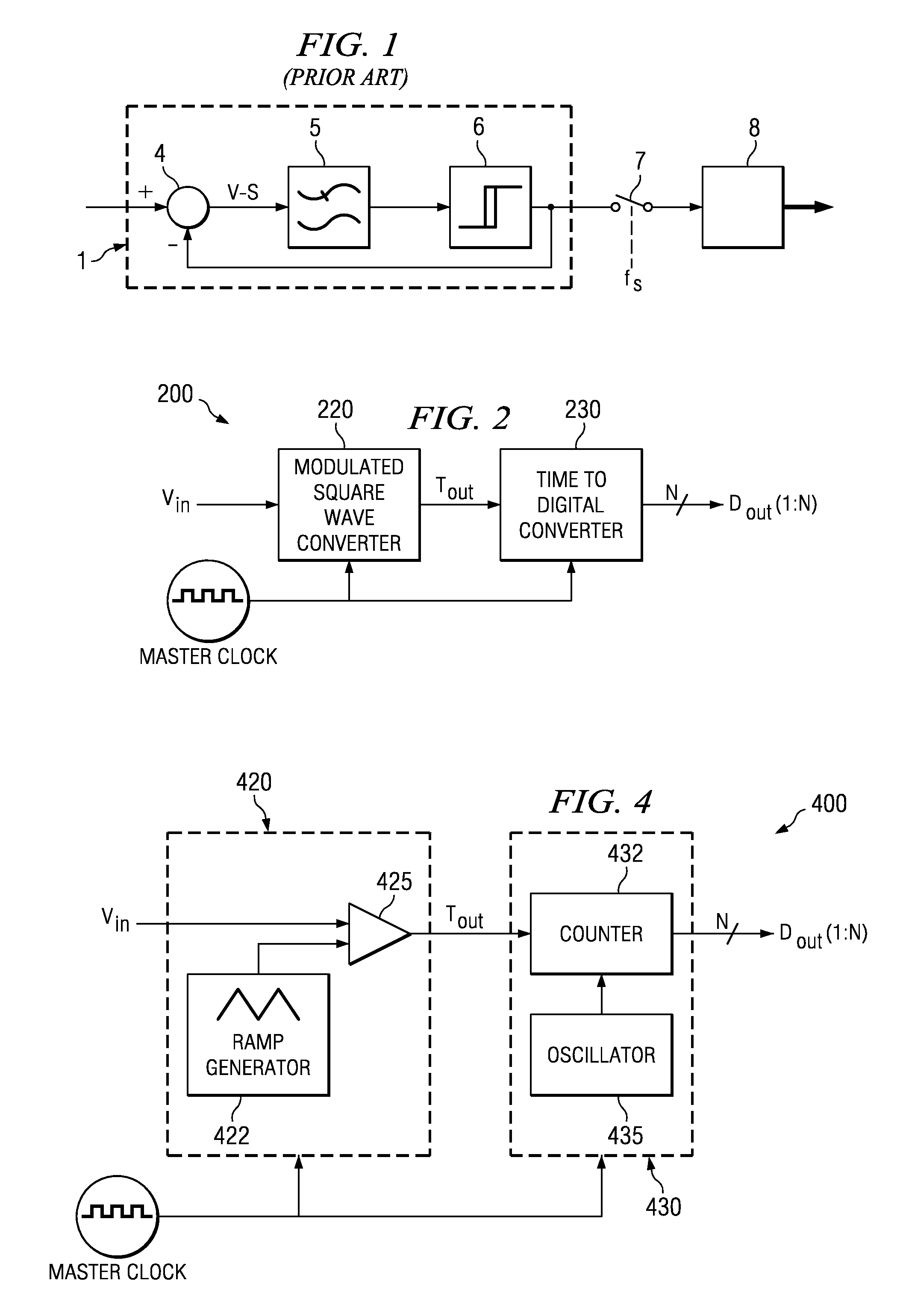Class D analog-to-digital converter
a technology of analog-to-digital converter and mixed-signal semiconductor, which is applied in the direction of code conversion, transmission system, instruments, etc., can solve the problems of difficult implementation of adc's designed in the traditional way, achieve medium-to-high resolution, and solve the problem of solving a new problem, so as to reduce the number of circuits, high speed of the new transistor, and high performance in one chip
- Summary
- Abstract
- Description
- Claims
- Application Information
AI Technical Summary
Benefits of technology
Problems solved by technology
Method used
Image
Examples
Embodiment Construction
[0021]FIG. 1 is discussed above in the Background of the Invention section of this document and the reader is assumed familiar with the principles of that discussion. For the ADC in this application, instead of quantizing an analog signal in the voltage domain, the analog signal is converted into the time domain (e.g. the time duration of the created pulses corresponds to the amplitude of the analog signal), and then the time domain pulses' widths are sampled (measured) and turned into digital bits which are directly correlated to the voltage amplitude of the original analog signal. As noted in the Background section, the prior art of Engel Roza has a modulation scheme that does have any clocking, forcing a need for extra circuitry, such a sampling circuit, special filtering, decimation and additional timing circuit to align signals from the modulation section to the subsequent circuitry. In contrast, the ADC in this application uses a different modulation scheme that does not need ...
PUM
 Login to View More
Login to View More Abstract
Description
Claims
Application Information
 Login to View More
Login to View More - R&D
- Intellectual Property
- Life Sciences
- Materials
- Tech Scout
- Unparalleled Data Quality
- Higher Quality Content
- 60% Fewer Hallucinations
Browse by: Latest US Patents, China's latest patents, Technical Efficacy Thesaurus, Application Domain, Technology Topic, Popular Technical Reports.
© 2025 PatSnap. All rights reserved.Legal|Privacy policy|Modern Slavery Act Transparency Statement|Sitemap|About US| Contact US: help@patsnap.com



